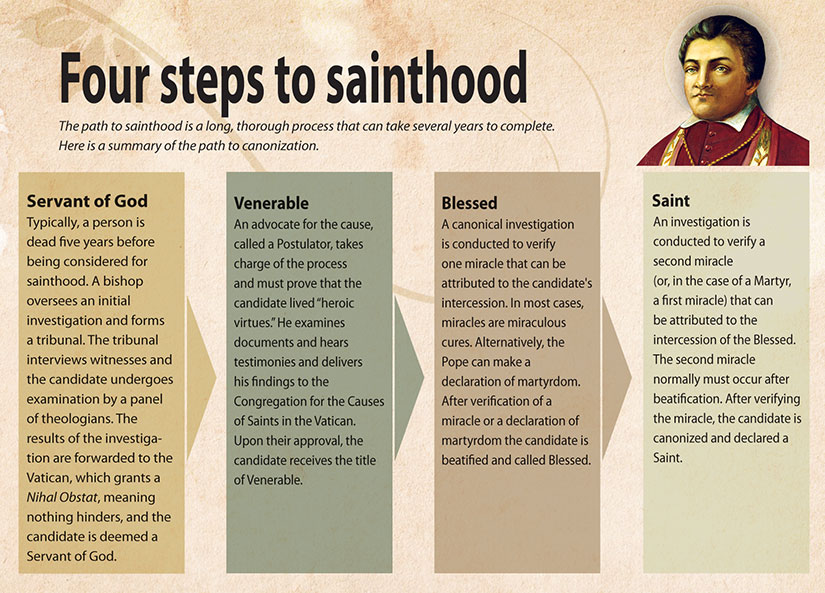“I intend to initiate the cause for canonization for Bishop (Michael) Power, and will be seeking to identify and present for the judgment of the Congregation for the Causes of Saints other laity, religious and clergy through whose lives of holiness the light of Christ has shone among us,” Collins announced during his homily at the anniversary Mass on May 30, attended by 35 bishops from across Canada, more than 200 priests of the archdiocese and a score of invited guests.
In Power’s case, there is already evidence of miracles accumulating. During the reconstruction of St. Michael’s Cathedral bits of broken brick and limestone from the crypt where the founding bishop is buried were sought out by at least two dozen people suffering from serious illness.
The Catholic Register interviewed two people who believe they recovered from stage four cancer because of prayers offered while holding the relics of Power.
“As they kept on giving me chemo, I kept on praying with this stone,” Deborah Zago of Burlington, Ont., said.
Zago went from hallucinating and unable to stand to volunteering at the clinic where she was once in palliative care.
Pat Zaino had a PSA (prostate specific antigen) score of 644 when he began to pray with his “miracle rock” from Power’s crypt. The normal PSA score for a man his age is 2.5. Within eight months Zaino was in complete remission.
The case for Power’s sainthood won’t rest on miracles alone. The young Canadian bishop’s life of grace was capped by an extraordinary death in the service of poor refugees.
In the summer of 1847, Toronto was a small outpost of the British Empire with just 20,000 citizens, but it hosted 38,560 Irish refugees fleeing famine in their home country. Many of them arrived sick and were confined to at least 12 fever sheds built at the foot of Bathurst Street.
That summer, 863 Irish migrants died of typhus, but that didn’t scare Power. He was down there as often as possible with the oil of healing and the blessed sacrament, offering the comfort of prayers, friendship and the sacraments.
When Power died some 3,000 citizens of Toronto — Protestant and Catholic — attended his funeral. It wasn’t the only time Power brought together the often divided population of a city where the Orange Order held sway. In 1845 he persuaded Torontonians of all faiths to help dig the foundations of St. Michael’s Cathedral in exchange for a barbecued ox.
What Power founded with just 20 priests to serve an area from Thunder Bay to past Oshawa, from Windsor to Lake Nipigon, has grown to be one of the most culturally diverse Catholic archdioceses in the world with two million Catholics.
There was no immediate indication of just who else Collins may be thinking of promoting for sainthood. Others who gave their lives in service of the people of Toronto include Mother Delphine Fontbonne, who founded the Sisters of St. Joseph in Toronto and died of typhus in 1856. In 1847, five young women from Ireland, missioned by the Institute of the Blessed Virgin Mary, arrived in Toronto to teach and to heal. They are among more than 60 Catholics buried in the crypt below the restored St. Michael’s Cathedral.
The 175th anniversary celebrations are a moment to remember all the many forms of service Catholics offer freely to their neighbours, said Collins.
“It is the laity of the diocese who for over 175 years have been the vibrant heart of our community. From a few, mainly Irish parishioners of the early days to a community of over two million members today, from all over the world, the lay faithful of the diocese proclaim Christ in a society which has always been, to greater or lesser degrees, a mission territory in need of evangelization, and resistant to it,” Collins said. “Those who gather around the altar of the Lord in our 225 parishes are called and sent to reach out to the scattered, to those who have drifted away from the practice of the faith, to those who are seeking God in a confusing world, and to those who in any way are suffering physically, mentally or spiritually.”
 Graphic by Lucy Barco
Graphic by Lucy Barco


